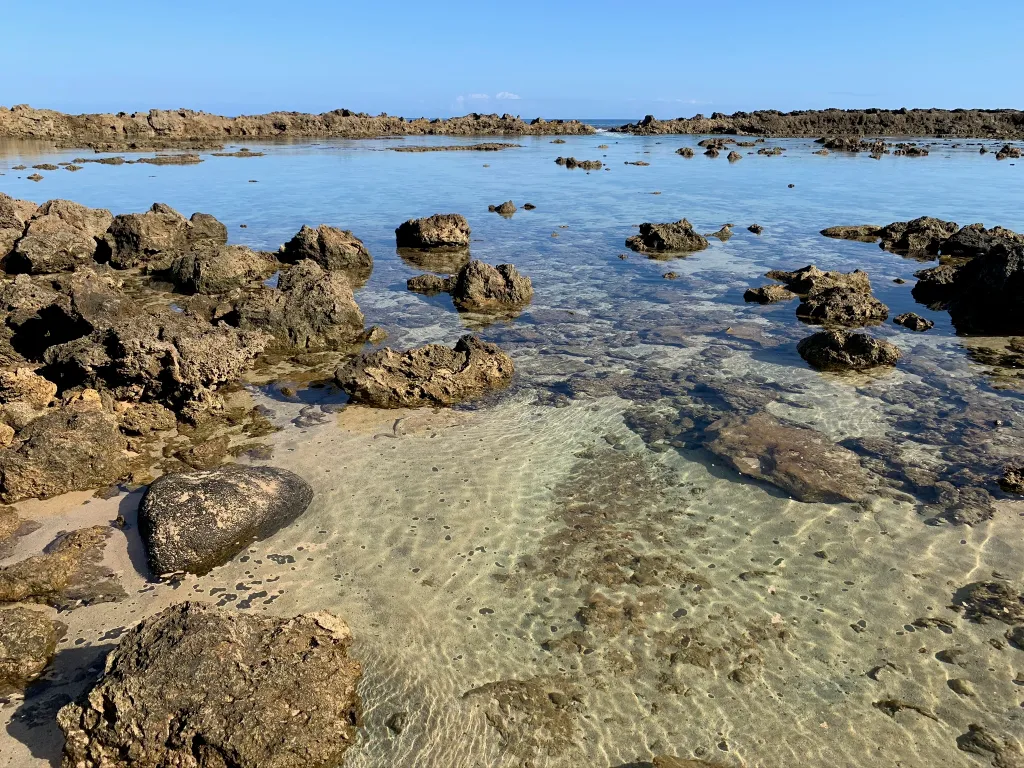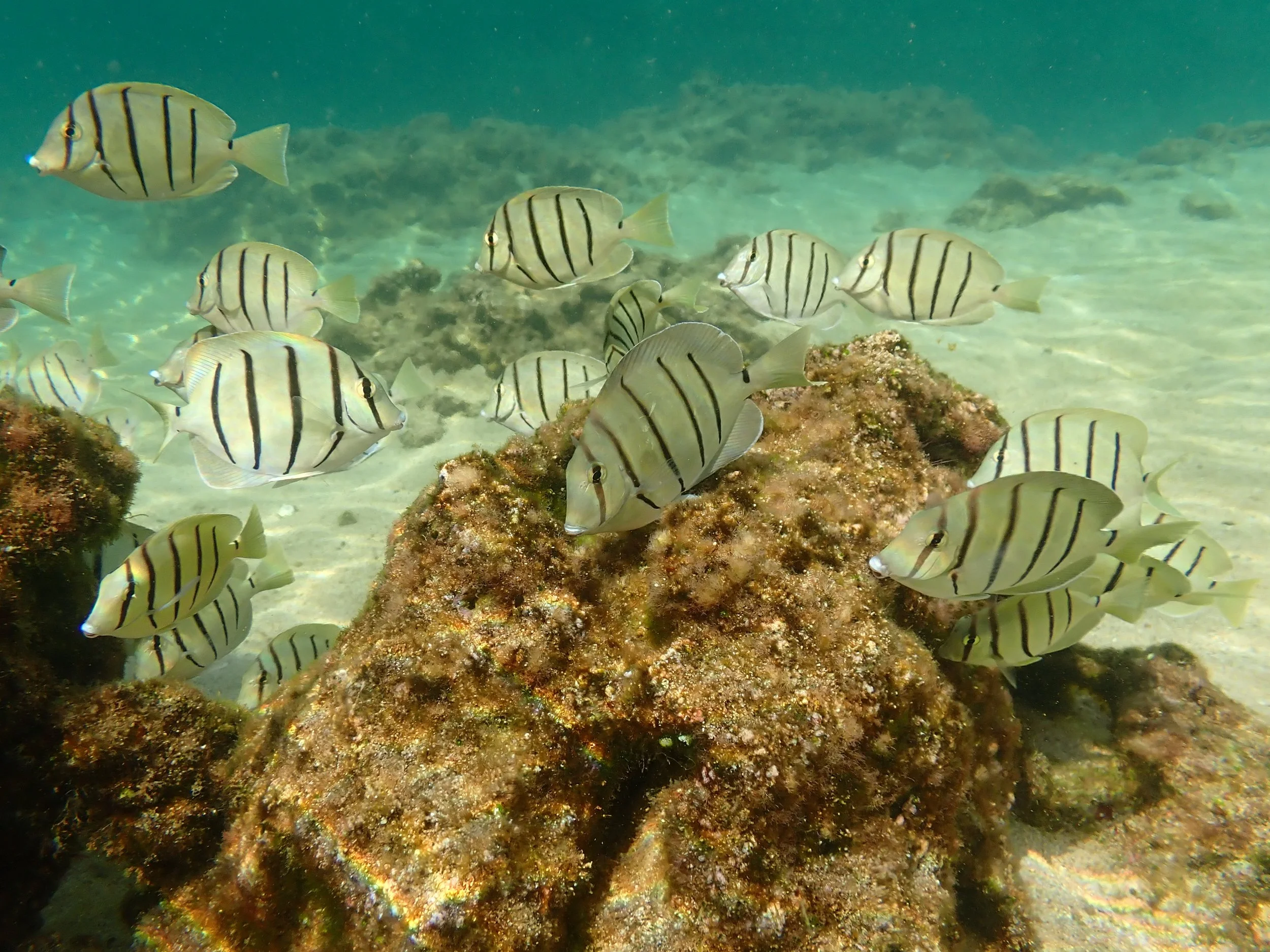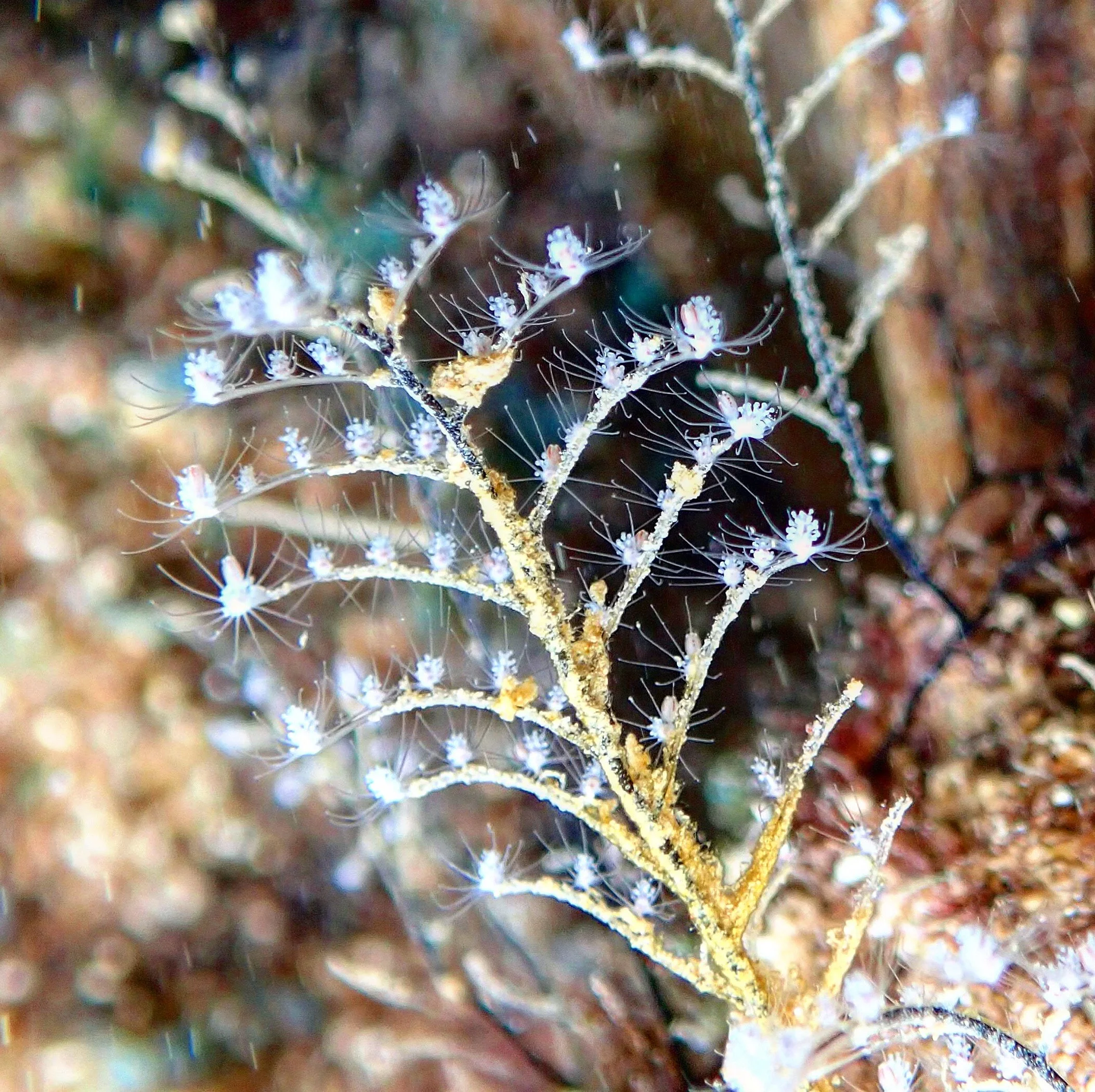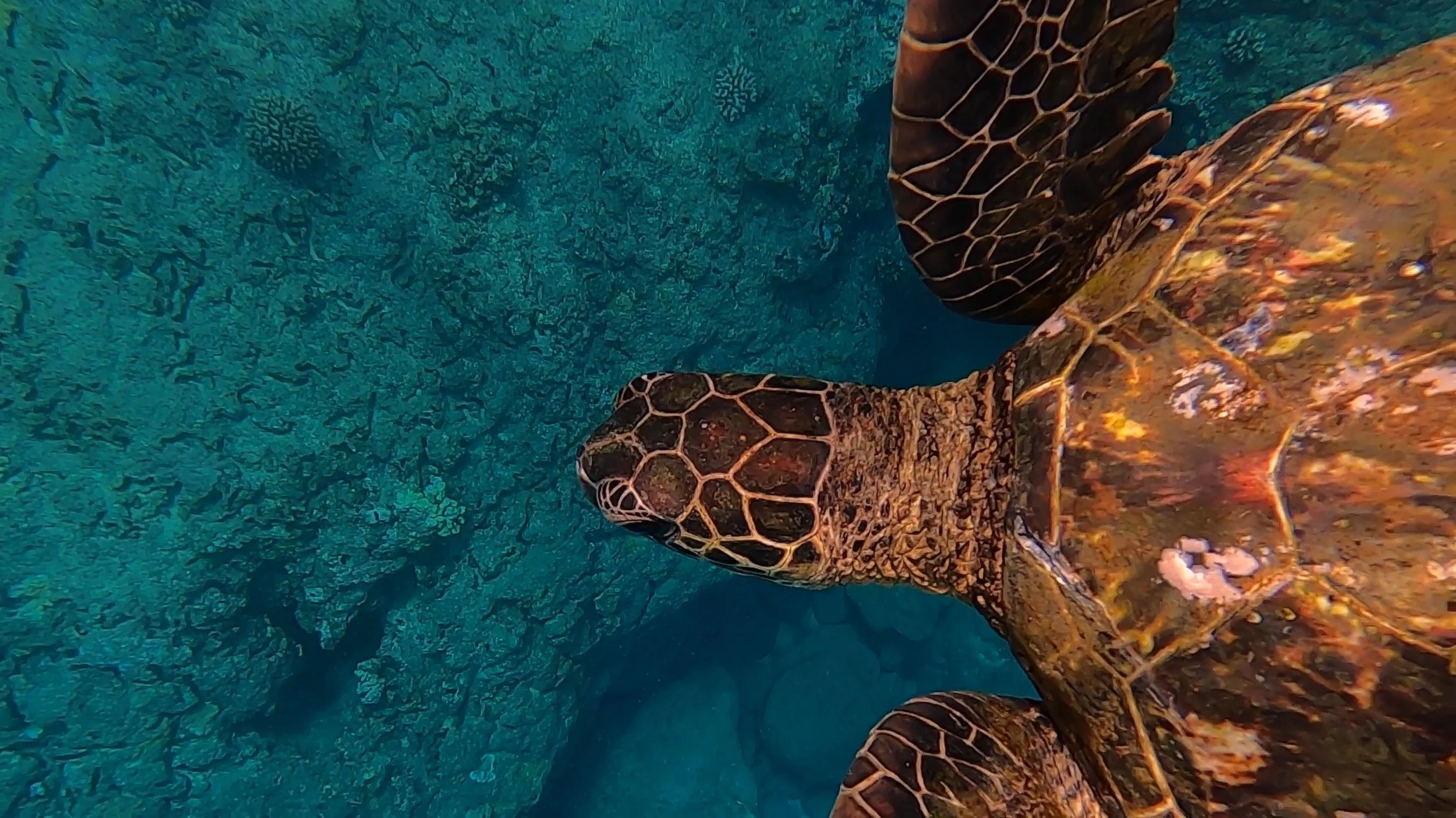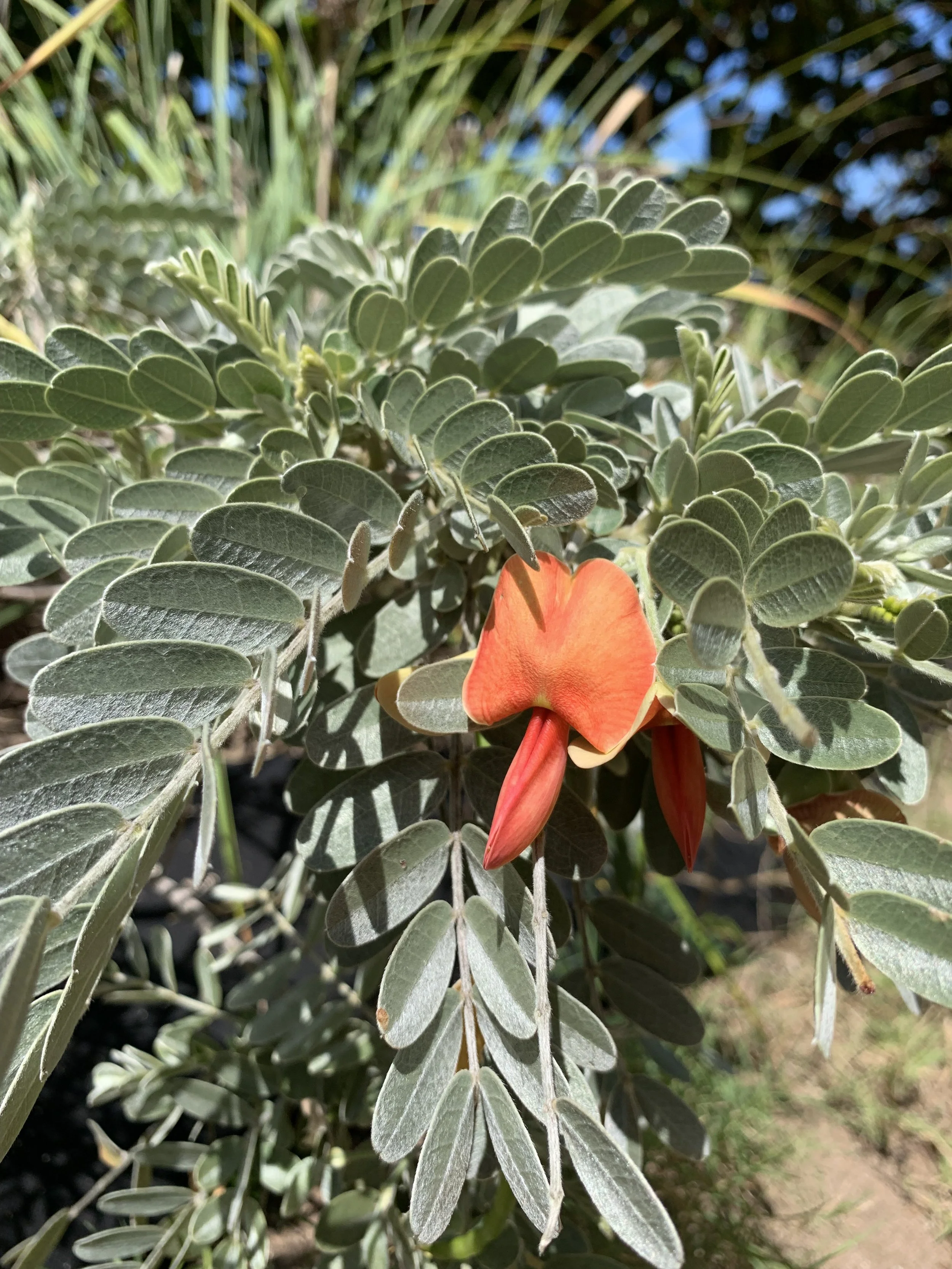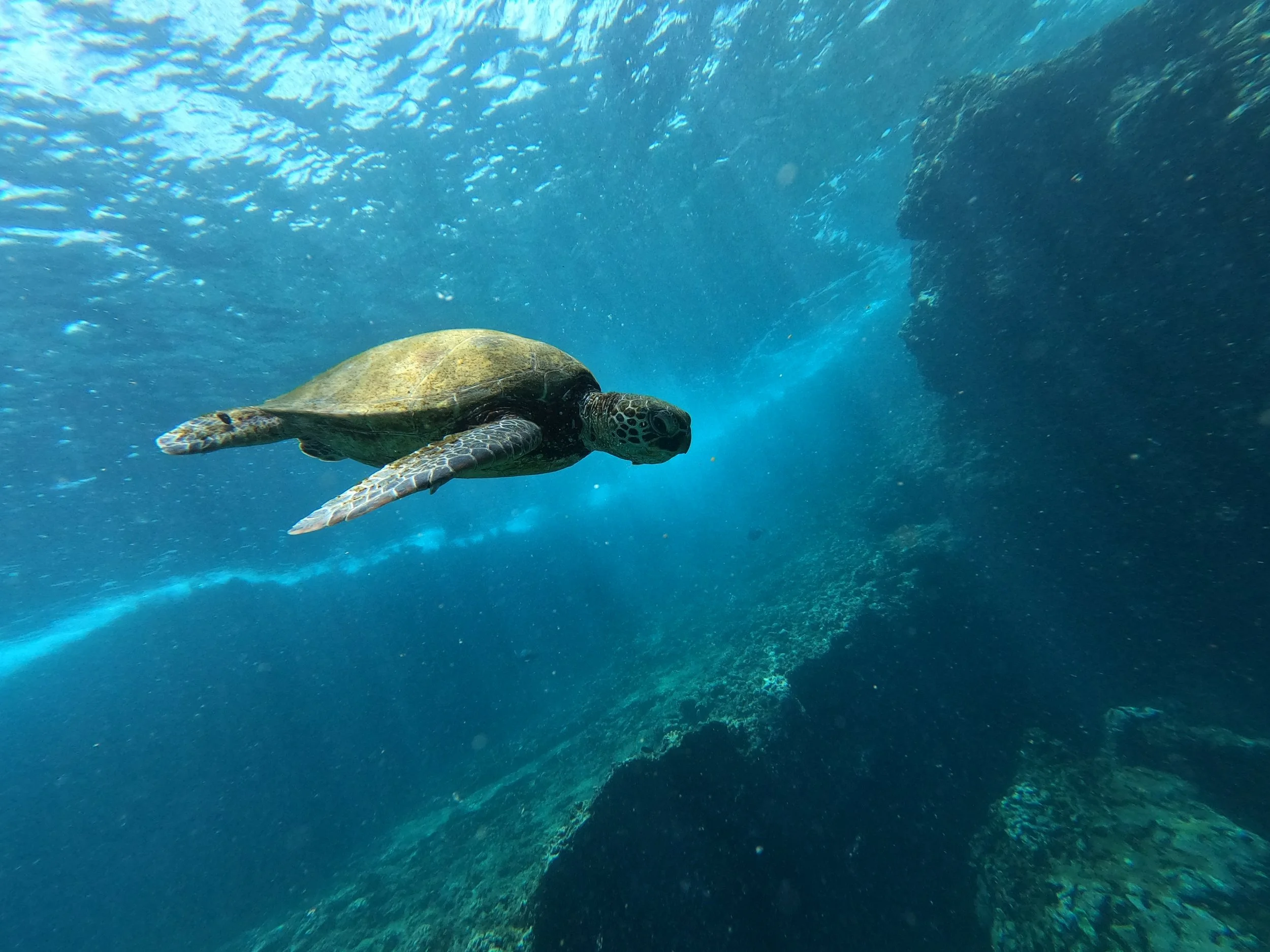
A Pu‘uhonua for Marine Life
Why is the Pūpūkea MLCD Biologically Special?
The Pūpūkea MLCD is one of the very few places in Hawai‘i where an unchannelized stream flows into an MLCD (Waimea Bay) and where both marine and terrestrial resources are protected. Although far from the ancient Hawaiian ahupua‘a management system, it is a step in that direction.
The area within the Pūpūkea Marine Life Conservation District (MLCD) that stretches from behind the Sunset Beach fire station over to the point between “Sharks Cove” and Ke Iki is traditionally known as “Kapo‘o.” Kapo‘o gets its name from the loud echoing or booming sound of the waves that crash onto the exposed ancient reef, and the North Shore surf season is the perfect time to listen and watch for these explosive displays.
Within Kapo‘o is a place of peace and safety, a sanctuary functioning much like a nursery: a pu‘uhonua for marine life. Many of us have experienced this protected place, whether it was transiting by and seeing it, taking our keiki to play in its shallow waters, or perhaps you’ve taken the time to snorkel and explore its shallow marine habitat. The Kapo‘o “Tidepools” has served as an iconic landmark for those who live in the community or have spent time in the area.
The Kapo‘o Tidepools are unique from other coastal zone habitats found around Hawai‘i. It is a protective sub-tidal pool roughly the size of three football fields that maintains a connection to the ocean at several points; therefore, it is not, by definition, a tidepool. Although tidepools do occur at Kapo‘o, the feature most closely aligns with the description of a lagoon or coastal embayment. Either way, all three habitat types can function as an important nursery for reef fish and other marine life.
During months of little wave action, the tidepool takes on a brackish water nature when it is fed fresh water from submarine springs. The unique and dynamic ecosystem of the tidepool hosts an abundance of native juvenile fish species that help recharge fish stocks in the Pūpūkea Marine Life Conservation District. This, in turn, restocks fish in open fishing areas along the neighboring coastline outside of the MLCD in what is called “spillover.” Protecting fish and other marine species here means increasing numbers elsewhere.
Mālama Pūpūkea-Waimea (MPW) has performed years of kilo, or observations, in and around the Kapo‘o tidepool to capture changes in the natural environment, which experiences heavy human use year-round. Kilo, coupled with western scientific survey methods, helps MPW understand the environment, ecology, and the impacts to marine life in the Kapo‘o tidepool. Well over 80 unique species of fish, over 50 species of limu (algae), and dozens of coral and invertebrate species make up the tidepool’s rich diversity of native marine life. Additionally, shorebirds, turtles, Hawaiian monk seals, eagle rays, and white-tip reef sharks often pay visits to the area.
The entire Pūpūkea MLCD receives high wave activity in the winter months, mobilizing underwater boulders even at depths of 40 feet. It is educationally valuable as a study of high-wave impact zones because the wave activity has a profound effect on the ecology of the MLCD. Coral cover is scattered and those corals that do live in the area are species that can withstand pounding waves.
Submarine caves are found at Kapoʻo particularly at the northeast point of the Pūpūkea cove.
Pūpūkea or Kapoʻo (Sharks Cove) is one of the most popular shore-entry destinations for snorkelers and SCUBA divers on O‘ahu, second only to Hanauma Bay. Pūpūkea has a depth of about 20 feet at the mouth of the cove. Diving is considered to be better outside the cove, where depths slope to about 45 feet. Waters just around the “tables” at Kalua O Maua are about 15 feet deep, and diving is considered to be better farther out at 30 to 45 feet.
Corals
The coral reef communities of the Pūpūkea MLCD have to contend with large swells every winter. While the coral cover is relatively low (10%) the area includes mainly wave-resistant species. Encrusting coral dominate. According to a University of Hawai‘i CRAMP study, the most common corals in the MLCD are pōhaku puna (lobe coral) and cauliflower coral. Also present are crust coral, corrugated coral, and blue rice coral. CRAMP also reported finding the rare coral Montipora studeri in the area.
Fish
A 2005 statewide study of the 11 MLCDs titled “Marine Protected Areas in Hawai‘i” conducted by Friedlander, Brown, Monaco, and Clark showed that in the Pūpūkea MLCD, overall fish weight was four times higher in the MLCD compared to the outside areas open to fishing. Of the eleven MLCDs tested, Pūpūkea fell somewhere around the middle in relation to fish weight and reef life. Fish weight outside the MLCD was considered low (likely due to overfishing).
Major fish found in the MLCD were māikoiko (whitebar surgeon), mai‘i‘i (brown surgeon), na‘ena‘e (orange band surgeon), and umaumalei (orange spine unicornfish). No major apex fish such as ulua or ‘omilu were found outside the MLCD. Hinalea (saddle wrasse), lau wiliwili (milletseed butterfly fish), and mai‘i‘i (brown surgeon) were common.
Updated biological information on Kapoʻo can be found on the Act 31 page HERE.

